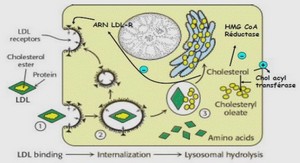Étude de la variabilité inter- et intra-individuelle du comportement alimentaire des chèvres laitières
Animals, Design, and Feeding
The feeding behaviour of two breeds of dairy goats (Alpine and Saanen) was characterized in three experimental periods according to their stage of lactation: • 16 goats born in 2018 (eight Alpine goats, eight Saanen goats) at the middle of their first gestation and therefore non-lactating (NoLact); • 32 goats born in 2017 (20 Alpine goats, 12 Saanen goats) in the middle of their first lactation (MidLact); • 24 goats also born in 2017 (12 Alpine goats, 12 Saanen goats, including 20 goats already tested in MidLact), at the end of their first lactation and the middle of their second gestation (EndLact); two goats were replaced due to illness and adaptation problems. In each experimental period, the goats were assigned to groups of four individuals with one to two Saanen in each group, balanced for age, body weight (BW) at the start of the experimental period and – when occurring – milk production (MP). For the EndLact trial, each group had two or three goats originating from the same group as MidLact. The groups were small (n=4) and of similar composition in terms of breeds and live weight variation to make the social environment as similar as possible. The groups were housed in 7.6 m² group pens with slatted floors. Each pen was equipped with four feed stations, one feed station consisting of a trough system fitted on a scale, manufactured by Baléa (Saint-Mathieu de Tréviers, France) and an antenna manufactured by Gabard (Argentonnay, France) to receive the signal from the electronic ear-tag worn by the animals. A goat could gain access to the feed trough via its ear-tag, and each goat had access to one feed station only. The use of metal brackets between the feed station spaces Chapitre 4 (Article 2) –Variabilité individuelle 136 and the allocation of one feed station per animal minimized the competition and social influences while feeding. After an adaptation to the experimental set-up of six days on average, in order to ensure that each goat learned the position of its allocated feed trough, the feeding behaviour was recorded for nine days (NoLact), 10 days (MidLact) and six days (EndLact). During adaptation, the goats were housed and fed exactly the same way as during the feeding behaviour measurements. The animals were fed ad libitum with the same total mixed ration (TMR) consisting of (on a DM basis) 25 % meadow hay, 28 % chopped dried alfalfa (Rumiluz, Désialis, Paris, France), 27 % pressed sugar beet pulp, 15 % commercial concentrate (Fluvialac, Agralys Aliment, Châteaudun, France) and 5 % rapeseed meal. The TMR (DM content 54.9 %) contained (on a DM basis) 14.1 % CP, 4.7 % starch, 9.3 % ash, 42.8 % NDF, 23.7 % ADF and 4.7 % ADL. Quantities of feed offered were adjusted daily to ensure at least 10 % refusals. The TMR was offered twice daily, shortly after milking in lactating animals, in the proportion of 2/3 at 15:00 h and 1/3 at 07:00 h, according to the usual time interval between milking. Refusals were removed daily. The goats in lactation were milked twice daily in MidLact and once daily in EndLact. Those in lactation (MidLact and EndLact) were weighed at each milking and nonlactating animals (NoLact) were weighed weekly. Milking was performed in a rotary milking parlour with a low line at a vacuum pressure of 35kPA, a pulsation rate of 85 pulses/min and a pulsation ratio of 65/35. Raw milk yield was recorded using an automatic device designed for milk recording in small ruminants developed by INRAE (European patent no. 94916284.6).
Intake measurements and determination of meals
The feeding station system recorded the weight of the feed contained in the trough every 2 s with an accuracy of 5 g. Measurements for one day started at 15:00 h and ended with the collection of refusals around 15:00 h the next day. There was an interruption in the afternoon of around 30 min in NoLact and 1 h in MidLact and EndLact to allow delivery of the TMR, milking and the backup of the feed station software. In the morning, the Chapitre 4 (Article 2) –Variabilité individuelle 137 interruption was around 5 min in NoLact, 40 min in MidLact and 10 min in EndLact to allow delivery of the TMR and milking for goats in MidLact (goats in EndLact being milked once daily in the afternoon). This interruption was performed by blocking access to the feed troughs. From the feed weight data collected, an algorithm was created to identify plateaus (adapted from Blavy et al., 2020), i.e. times when the feed weight was stable. Between these plateaus, the feed weight was unstable because the goat was interacting with the feeding station, and these unstable events were referred to as visits. To group visits into meals, an intra-meal interval was determined using the method described by Tolkamp et al. (1998). Briefly, the log frequency of the plateaus (pauses between visits) was calculated, and a frequency plot was performed for each individual. However, unlike Tolkamp et al. (1998), we did not find two normal distributions, but one clear normal distribution followed by a flat distribution for intervals ≥8 min. The first part of the distribution corresponds to the high frequencies of the short intervals (intra-meal intervals) and the rest of the distribution includes longer intervals (between meal intervals). We combined in one meal the weight of the feed consumed and the occupancy time of the feeding station for all visits spaced less than 8 min apart. Given the accuracy of our scales (5 g), meals with less than 10 g of feed consumed were removed, as were meals with durations of less than 10 s, as these were considered experimental artefacts. Using this method, we were able to determine six variables of feeding behaviour (Table 1). In accordance with previous work (Giger-Reverdin et al., 2020), special emphasis was given to the first meal after feed delivery.



